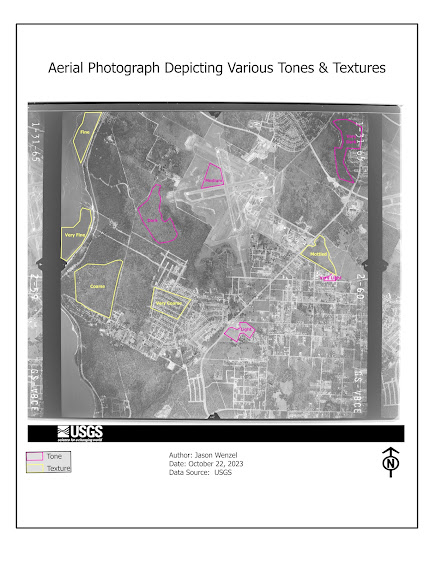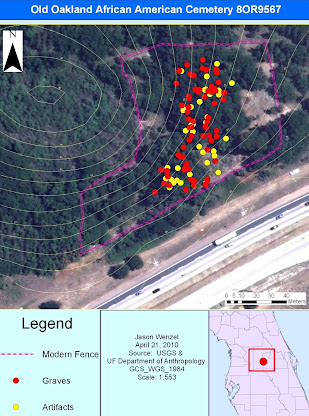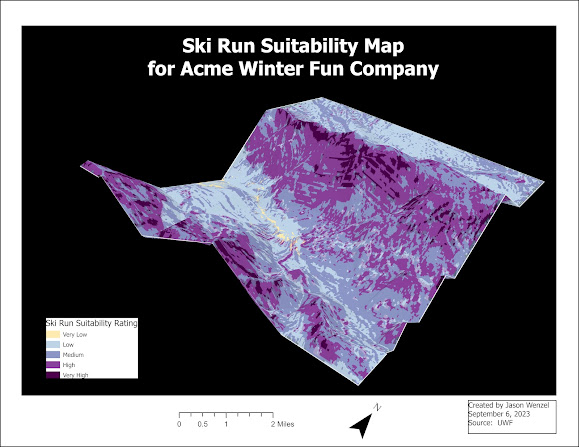Aerial Photography: Visual Interpretation
This week I started GIS 5027 (Photo Interpretation and Remote Sensing) and for the first lab assignment, we covered the basics of aerial photography, specifically visual interpretation. Here I learned how to interpret the tone and texture of aerial photographs and how to identify land features based on several visual attributes. In addition, I learned how to compare similar land features between true color and false infrared (IR) photographs.
For the first part of the assignment, I created a map that shows ten areas of interest based on either tonal or textual characteristics:
After this, I created another map that shows the identification of eleven different features represented by their attribute type (association, pattern, shadow, or shape-size). Examples of features included a cottage, a swimming pool, a segregated pavilion, and a street sign:
I found this week's module topic and lab exercise helpful in enhancing my knowledge and skills in aerial photographic interpretation. I enjoyed completing this exercise and overall found it very interesting. I believe the tools and techniques I used here will be helpful in my own research, as aerial photographic interpretation in archaeology, especially for sites with human occupation from the later historic era (extending into the 20th century) is crucial.




Comments
Post a Comment